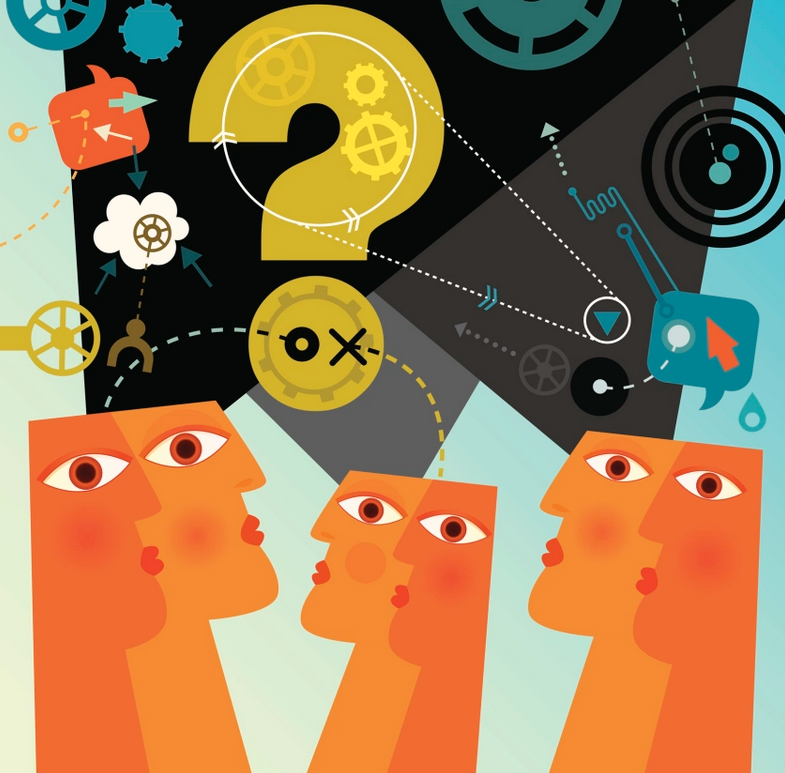NLP Language Patterns or Wonders of Logic?
NLP (Neuro-Linguistic Programming) is currently very popular among both managers and psychologists. I couldn’t ignore this topic either. I found the “Language Patterns” (LP) especially interesting—these are verbal “reframes” or strategies that allow you to change beliefs. Robert Dilts identified 14 such language patterns.
In my opinion, these 14 patterns are essentially the main logical concepts and ways of thinking, nicely packaged under the commercial brand of Language Patterns.
This article won’t analyze each pattern in detail—there’s plenty of that information online. Instead, I’ll try to organize the 14 LPs into a more understandable system. I should note that I’m not a certified NLPer; I’m just sharing my perspective.
The 14 Recognized NLP Language Patterns
- Intention
- Redefinition
- Consequences
- Separation
- Unification
- Analogy
- Changing the Frame Size
- Different Outcome
- World Model
- Reality Strategy
- Opposite Example
- Hierarchy of Criteria
- Apply to Self
- Meta-frame
Three Main Groups of Language Patterns
I’ve divided them into three main groups: subjective, objective, and neutral.
- Subjective (Worldview-based): World Model, Hierarchy of Criteria, Intention.
- Objective (Rational): Reality Strategy, Consequences.
- Neutral (Transformational Techniques): Redefinition, Separation, Unification, Analogy, Changing the Frame Size, Different Outcome, Opposite Example, Apply to Self, Meta-frame.
1. Subjective (Worldview-based) Patterns
The first and main group relates to a person’s inner world and their views about themselves and reality. For example:
- World Model: How a person sees the world (a scientist, a religious person, and a creative person all see things differently).
- Hierarchy of Criteria: The values a person holds (e.g., table manners vs. patriotism or family importance).
- Intention: Motives, desires, and aspirations, which are closely tied to worldview and values (a soldier at war has different intentions than someone sleeping peacefully at home).
Language patterns in this group are aimed at appealing to a different worldview, addressing values, or emphasizing intention.
Sales Example: “Your warehouse is outside the city, so it’s not profitable for us to buy from you.”
Response using Group 1 Patterns: “For those who are ready and willing to earn (World Model, Intention), the most important thing is profit (Hierarchy of Criteria). If you value delivery convenience above all (Hierarchy of Criteria), and nothing else bothers you (Intention), I suggest using a transport company to solve your logistics issues. I can arrange personalized terms for you, making it more profitable to buy from us outside the city than from a warehouse next to your office.”
2. Objective (Rational) Patterns
This group includes only two patterns: Reality Strategy and Consequences. What sets them apart from the subjective group is that they rely on facts and commonly accepted reality—just as the laws of logic require identity, non-contradiction, and sufficient reason.
- Reality Strategy: The difference between an adult’s and a child’s view of the world. Adults have experience and understand consequences, while children may not (e.g., a child might stick a fork in an outlet, not knowing the danger).
- Consequences: Making decisions based on what is real and what is not, considering the outcomes.
Sales Example: “Your advertising is too playful, so I don’t trust you and won’t buy from you.”
Response using Group 2 Patterns: “The playful style is just the wrapper—let me show you the substance. Let’s talk seriously; I’ll provide facts, figures, and proof that thousands trust our company (Reality Strategy). Once you have objective reasons to trust us (Reality Strategy), nothing will stop you from buying (Consequences).”
3. Neutral (Transformational) Patterns
This group includes Redefinition, Separation, Unification, Analogy, Changing the Frame Size, Different Outcome, Opposite Example, Apply to Self, and Meta-frame. These can be used with the previous groups or on their own. Logically, they change the point of view on an object, subject, or belief by altering the context or scope of the concept.
Types of Logical Reasoning
In formal logic, there are three main types of reasoning:
- Deduction: Drawing a specific conclusion from a general rule.
- Induction: Deriving a general rule from several specific cases.
- Analogy: Drawing conclusions about similarities in some features based on similarities in others.
Analogy can be divided into analogy of properties and analogy of relationships.
All nine language patterns in the third group can be classified as one of these types of reasoning:
- Deductive Patterns (narrowing the frame, specifying): Separation, Changing the Frame Size, Opposite Example, Apply to Self.
- Inductive Patterns (broadening the frame, generalizing): Unification, Changing the Frame Size, Opposite Example, Meta-frame.
- Analogy Patterns (finding similar concepts or images): Redefinition, Analogy, Different Outcome.
Some techniques can be both deductive and inductive, as they can be used for both generalization and specification.
Conclusion
To sum up, from a logical perspective, there are three main groups of language patterns: subjective, objective, and neutral (transformational techniques). The neutral group consists of analogy, deduction, and induction patterns.



